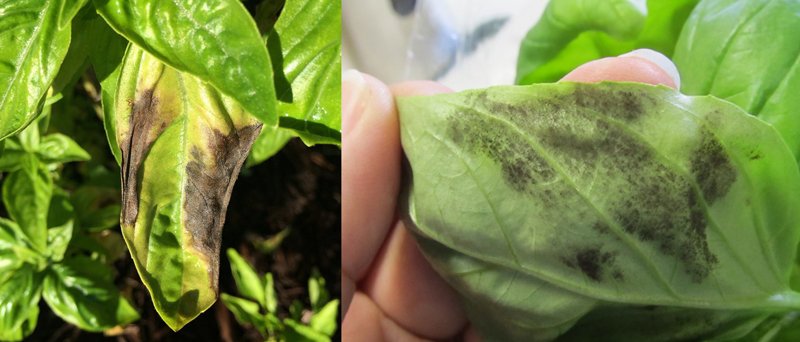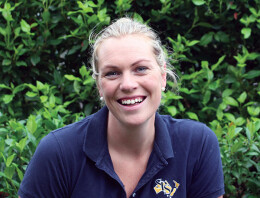Downy Mildew in Basil
15 Aug 2022 by Pip Kenny
Are you seeing some of this in your Basil crop? As temperatures start to creep up so does the disease pressure. Downy Mildew Peronospora belbahrii is a common disease found in Basil but this can be managed in your crop. For more information follow the below link to see what might be affecting your basil and how our varieties can help you fight back against disease pressure.

Basil Downy Mildew (Peronospora belbahrii)
This relatively new disease spreads very quickly, with the potential to cause serious losses. It is characterized by a slight yellowing on the upper side of leaves, often in bands, somewhat resembling a nutritional deficiency. Purplishgrey spores develop on the lower surface producing black “fuzz” on the underside of leaf.
Prevention and Control
The newer generation of resistant varieties show a much stronger level of resistance than the first-generation varieties. Growing these varieties during the window when likelihood of infection is highest, is most strategic. There are many different strains (or races) of mildew that correspond to different geographical locations.
The conditions favouring disease development are high humidity and extended leaf wetness. These conditions should be managed as a preventative measure. This can be achieved with good air flow, the use of drip irrigation or soaker hoses, good soil drainage, full sunlight or illumination and adequate plant spacing.
Fusarium Wilt and Crown Rot (Fusarium oxysporum f. sp. basilici)
A vascular wilt disease, fusarium wilt and crown rot of basil is caused by the fungus Fusarium oxysporum f. sp. basilici. Symptoms include curling, yellowing, and wilting of the leaves, starting at the crown; vertical brown streaks on stems, stunted plants and sudden plant death. Fusarium can be spread through contaminated soil, equipment, or seed, as well as by airborne spores.
Prevention and Control
Perform a soil test. If fusarium is found, choose fusarium-resistant basil varieties to grow there are many available and they are highly effective.
Gray Mold (Botrytis cinerea)
A devastating disease, the characteristic brown-to-grey fungal growth of gray mold appears on stems cut for harvest or on plant debris found around the growing area. Plant crowding and high humidity, together with moderately cool temperatures create an environment most favorable for the disease to spread. Spores are easily disseminated by air currents, rain and splashing.
Prevention and Control
To prevent botrytis gray mold it is important to keep the growing area clean and provide drip rather than overhead irrigation as well as adequate air circulation, heating, and ventilation.
Basal Root Rot, Damping Off (Rhizoctonia solani; Pythium spp.)
Though plants can be affected at any stage, this is a set of diseases that are particularly virulent on seedlings and young plants. Sudden wilting and plant collapse are symptoms. Both are intensified by high relative humidity and poor air circulation. Pythium damping off is favoured by cool conditions.
Prevention and Control
In a greenhouse environment, using sterile planting media and pots can help minimize the risk of root rot and damping off.
Leaf Spot (Pseudomonas spp.; Colletotrichum spp.)
Black spots or lesions on leaves or stems are signs that suggest leaf spot (also known as black spot), but definitive diagnosis of this set of organisms is best accomplished by lab testing of a plant sample. High relative humidity, dense plantings, and overhead watering are factors that favour the spread of these diseases.
Prevention and Control
There is no known control for bacterial leaf spot once established, but practices that avert splashing up onto the leaves from infected soil will help prevent infection. Drip irrigation and adequate circulation are key to prevention of leaf spot.
Check out our range of amazing basils here www.spsnz.com/our-products/herbs/basil
